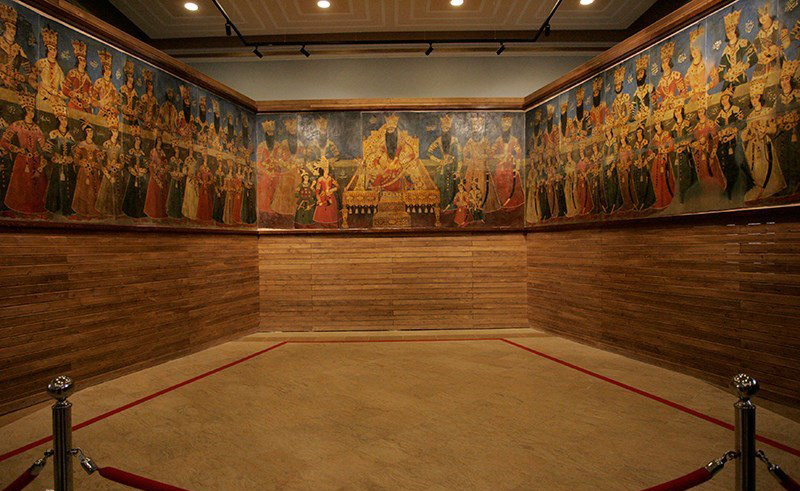A number of magnificent 19th-century paintings, currently kept in Tehran's Golestan Palace, will soon undergo restoration to be featured in a retrospective exhibition slated for March 28 at the Louvre Museum’s branch in Lens, northern France.
According to Fat'hollah Niazi, an expert at the Research Institute of Cultural Heritage and Tourism, three 37-meter-long paintings of "Saf-e Salam” (saluting line) series, dating back to the time of Fath-Ali Shah Qajar (the Iranian king of early 19th century) are among the outstanding works that will be restored in a RICHT's workshop, Mehr News Agency reported.
Two smaller paintings on canvas, created by Kamal-ol-Molk, an eminent Iranian painter (1848-1940), and Mehdi Mosavar-ol-Molk (late 13th century), as well as two more works of art by Nassereddin Shah (the king of Iran from 1848-96) are other precious paintings waiting to be prepared for display.
In collaboration with the palace complex's officials, the paintings will go through documentation, damage detection, mechanical and chemical cleaning, burlap reinforcement, replacement of old frames, color balancing and final polishing.
The exhibition is dedicated to the magnificent art of Qajar dynasty, which embraces innovation and modernization while still seeking to maintain its identity, said Louvre-Lens in its exhibition announcement.
According to the museum's website, the exhibition, together with the accompanying conference, has benefited from the generous support of Elahe Omidyar Mir-Jalali Fund, established by Roshan Cultural Heritage Institute, as part of the Louvre Endowment Fund.
The Qajar dynasty was founded in 1786 by Agha Mohammad Khan who seized power and settled in a small town, which became the capital, Tehran. After his assassination, he was succeeded by his nephew Fath-Ali Shah, followed by five other rulers. The last sovereign, Ahmad Shah, was deposed in 1925 by Reza Khan, founder of the Pahlavi dynasty.
Artistically speaking, the Qajar courts focused on a wide range of arts and crafts, including painting, glasswork and metalwork, elevating these disciplines “to a new level of excellence", the Louvre-Lens statement said.
The exhibition, titled "The Rose Empire: Masterpieces of 19th-Century Persian Art" will receive visitors through July 22.


